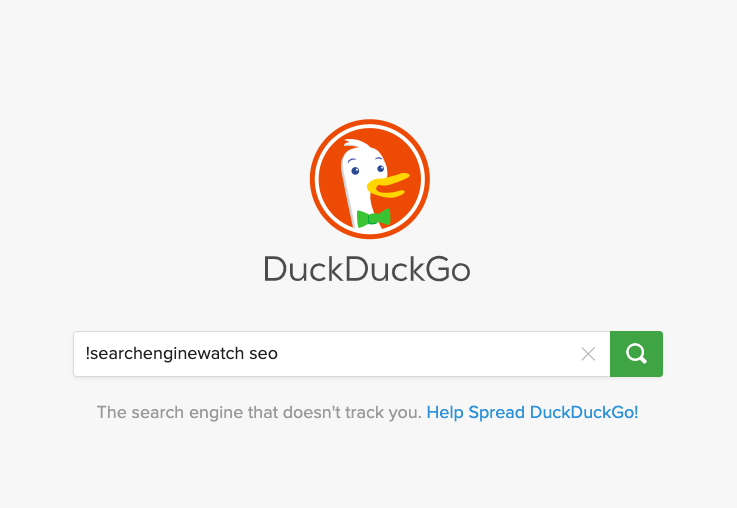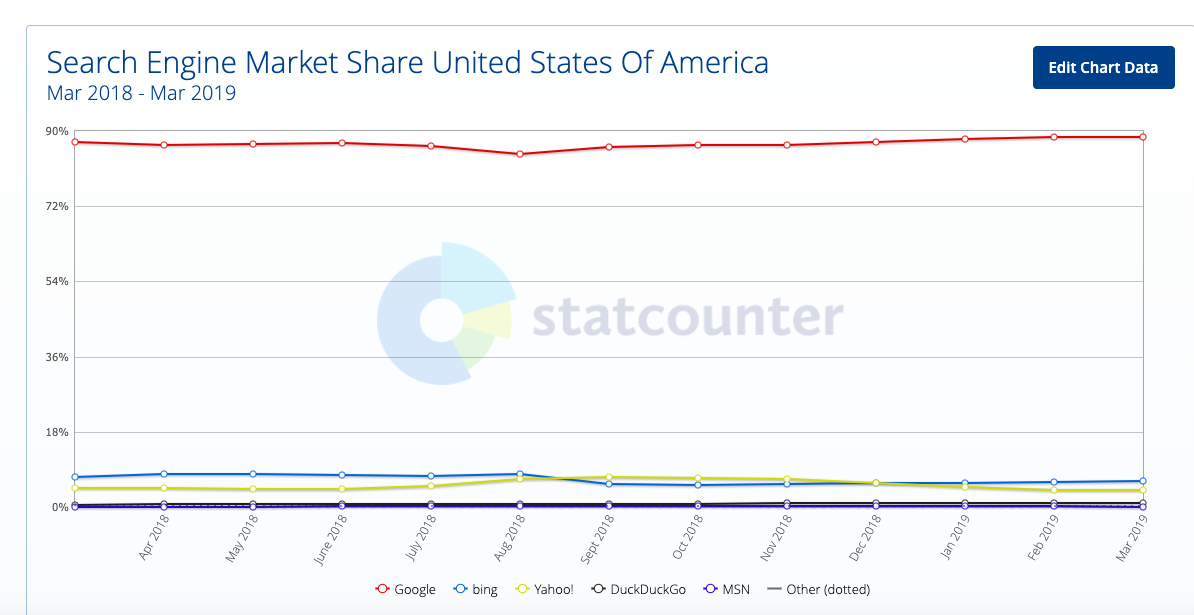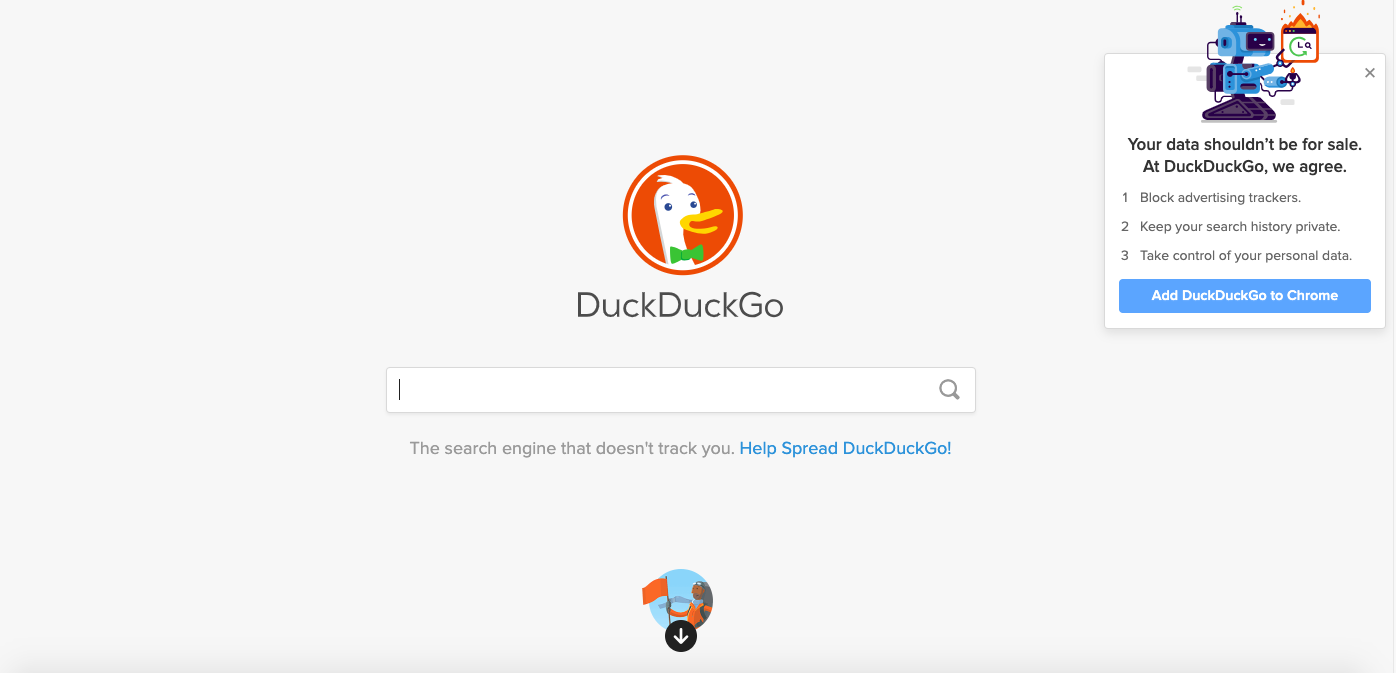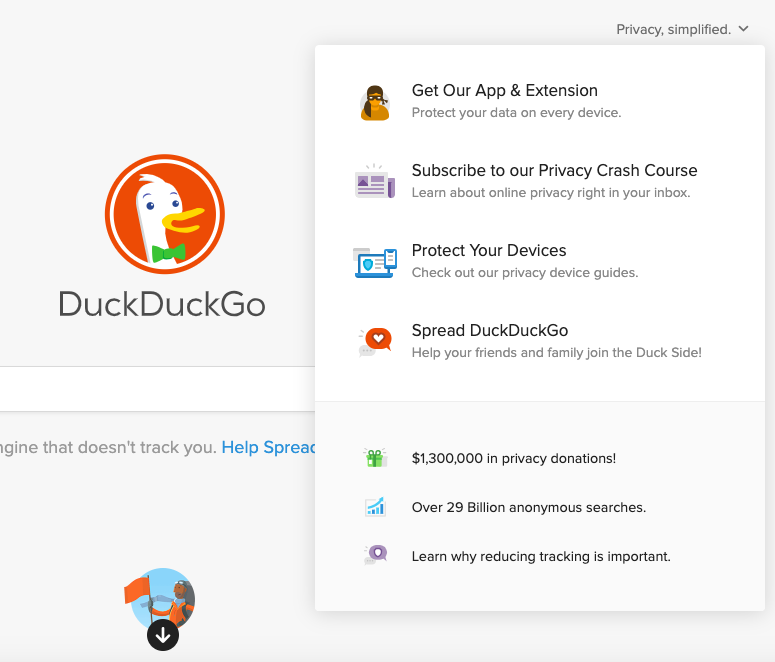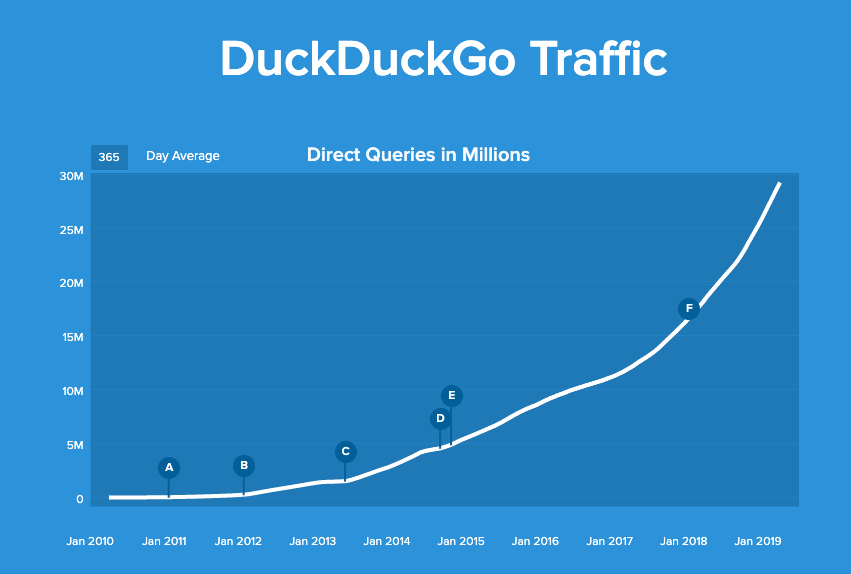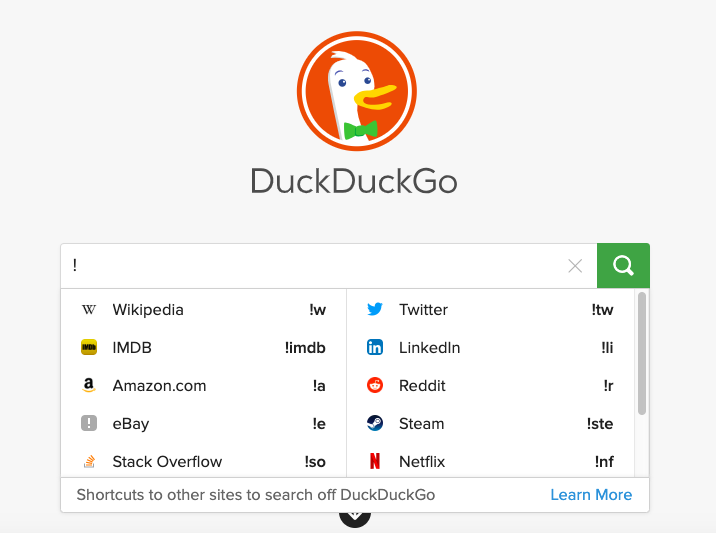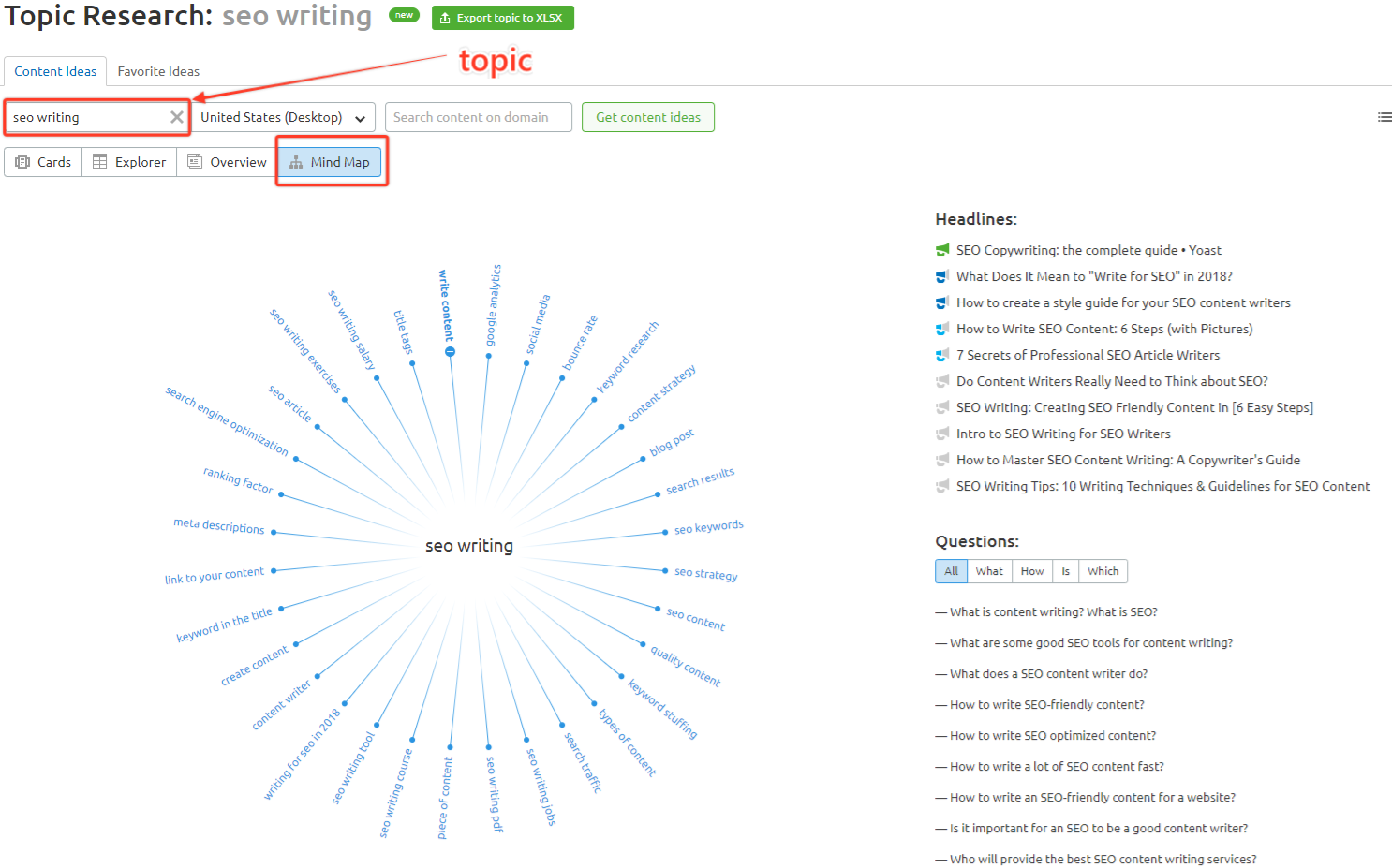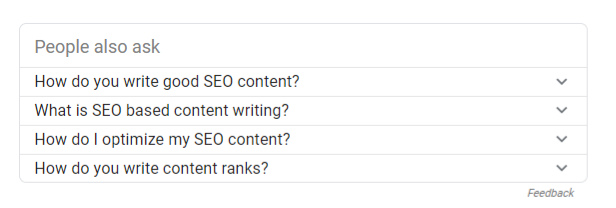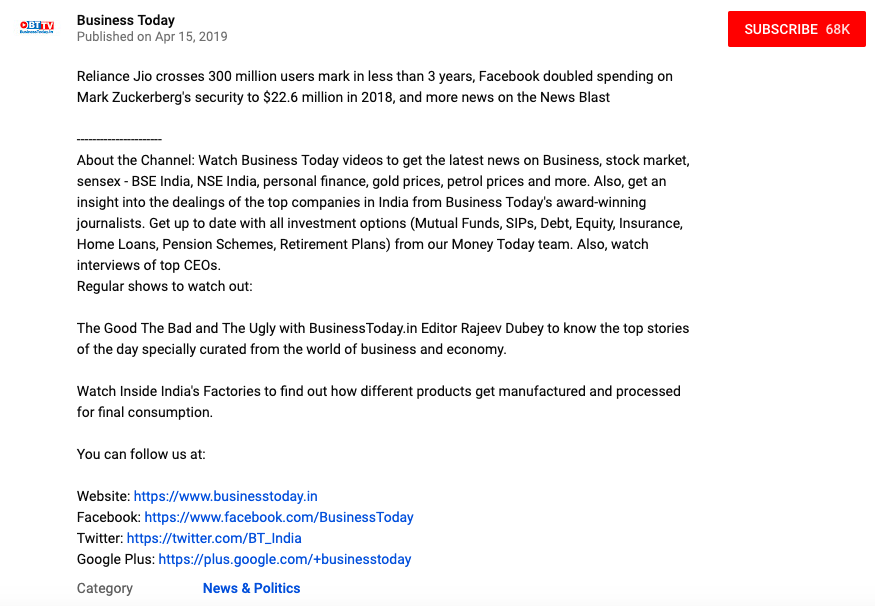
Venngage is a free infographic maker that has catered to more than 21,000 businesses. In this article, we explore how they grew their organic traffic from about 275,000 visitors per month in November 2017 to about 900,000 today — more than tripling in 17 months.
I spoke with Nadya Khoja, Chief Growth Officer at Venngage, about their process.
Venngage gets most of their leads from content and organic search. The percentage varies from month to month in the range of 58% to 65%.
In Nov 2017, Venngage enjoyed 275,000 visitors a month from organic search traffic. Today (16 months later) it’s 900,000. Nadya Khoja (their Chief Growth Officer) extrapolated from their current trend that by December of 2019 (in nine months) they will enjoy three million organic search visitors per month.

In 2015, when Nadya started with Venngage, they saw 300 to 400 registrations a week. By March of 2018, this was up to 25,000 a week. Today it’s 45,000.
While Nadya had the advantage of not starting from zero, that is impressive growth per any reasonable metric. How did they do it?
Recipe
There are a lot of pieces to this puzzle. I’ll do my best to explain them, and how they tie together. There is no correct order to things per se, so what is below is my perspective on how best to tell this story.
The single most important ingredient: Hypothesize, test, analyze, adjust
This critical ingredient is surprisingly not an ingredient, but rather a methodology. I’m tempted to call it “the scientific method”, as that’s an accurate description, but perhaps it’s more accurate to call it the methodology written up in the books “The Lean Startup” (which Nadya has read) and “Running Lean” (which Nadya has not read).
This single most important ingredient is the methodology of the hypothesize, test, analyze, and adjust.
What got them to this methodology was a desire to de-risk SEO.
The growth in traffic and leads was managed through a series of small and quick iterations, each one of which either passed or failed. Ones that passed were done more. Ones that failed were abandoned.
This concept of hypothesizing, testing, analyzing, and adjusting is used both for SEO changes and for changes to their products.
The second most important ingredient
This ingredient is shared knowledge. Venngage marketing developed “The Playbook”, which everyone in marketing contributes to. “The Playbook” was created both as a reference with which to bring new team members up to speed quickly, as well as a running history of what has been tested and how it went.
The importance of these first two ingredients cannot be overstated. From here on, I am revealing things they learned through trial and error. You have the advantage to learn from their successes and failures. They figured this stuff out the hard way. One hypothesis and one test at a time.
Their north star metrics
They have two north star metrics. The first one seems fairly obvious. “How many infographics are completed within a given time period?” The second one occurred to them later and is as important, if not more so. It is “how long does it take to complete an infographic?”
The first metric, of course, tells them how attractive their product is. The second tells them how easy (or hard) their product is to use.
Together these are the primary metrics that drive everything Venngage does.
The 50/50 focus split
As a result of both the company and the marketing department having a focus on customer acquisition and customer retention, every person in marketing spends half their time working on improving the first north star metric, and the other half spend their time working on improving the second.
Marketing driving product design
Those north star metrics have led to Venngage developing what I call marketing driven product design. Everywhere I ever worked has claimed they did this. The way Venngage does this exceeds anything ever done at a company I’ve worked for.
“How do I be good?”
This part of Nadya’s story reminds me of the start of a promo video I once saw for MasterClass.com. It’s such a good segue to this part of the story that I cropped out all but the good part to include in this article.
When Steve Martin shed light on an important marketing question
I’ve encountered a number of companies through the years who thought of marketing as “generating leads” and “selling it”, rather than “how do we learn what our customers want?”, or “how do we make our product easier to use?”
Squads
The company is structured into cross-functional squads, a cross-functional squad being people from various departments within Venngage, all working to improve a company-wide metric.
For example, one of the aspects of their infographic product is templates. A template is a starting point for building an infographic.
As templates are their largest customer acquisition channel, they created a “Template Squad”, whose job is to work on their two north star metrics for their templates.
The squad consists of developers, designers, UI/UX people, and the squad leader, who is someone in marketing. Personally, I love this marketing focus, as it de-focuses marketing and causes marketing to be something that permeates everything the company does.
There is another squad devoted to internationalization, which as you can infer, is responsible to improve their two north star metrics with users in countries around the world.
Iterative development
Each template squad member is tasked with improving their two north star metrics.
Ideas on how to do this come from squad members with various backgrounds and ideas.
Each idea is translated into a testable hypothesis. Modifications are done weekly. As you can image, Venngage is heavy into analytics, as without detailed and sophisticated analytics, they don’t know which experiments worked and which didn’t.
Examples of ideas that worked are:
- Break up the templates page into a series of pages, which contain either category of templates or single templates.
- Ensure each template page contains SEO keywords specific for the appropriate industry or audience segment. This is described in more detail further in this document.
- Undo the forced backlink each of the embedded templates used to contain.
- This allowed them to get initial traction, but it later resulted in a Google penalty.
- This is a prime example of an SEO tactic that worked until it didn’t.
- Create an SEO checklist for all template pages with a focus on technical SEO.
- This eliminated human error from the process.
- Eliminate “React headers” Google was not indexing.
- Determine what infographic templates and features people don’t use and eliminate them.
Measuring inputs
I personally think this is really important. To obtain outputs, they measured inputs. When the goal was to increase registrations, they identified the things they had to do to increase registrations, then measured how much of that they did every week.
Everyone does SEO
In the same way that marketing is something that does not stand alone, but rather permeates everything Venngage does, SEO does not stand alone. It permeates everything marketing does. Since organic search traffic is the number one source of leads, they ensure everyone in marketing knows the basics of technical SEO and understands the importance of this never being neglected.
Beliefs and values
While I understand the importance of beliefs and values in human psychology, it was refreshing to see this being proactively addressed within an organization in the context of improving their north star metrics.
They win and lose together
Winning and losing together is a core belief at Venngage. Nadya states it minimizes blame and finger-pointing. When they win, they all win. When they lose, they all lose. It doesn’t matter who played what part. To use a sports analogy, a good assist helps to score a goal. A bad assist, well, that’s an opportunity to learn.
SEO is a team effort
While it is technically possible for a single person to do SEO, the volume of tasks required these days makes it impractical. SEO requires quality content, technical SEO, and building of backlinks through content promotion, guest posting, and the others. Venngage is a great example of effectively distributing SEO responsibilities through the marketing department.
To illustrate the importance of the various pieces fitting together, consider that while content is king, technical SEO is what gets content found, but when people find crappy content, it doesn’t convert.
You can’t manage what you don’t measure
This requires no elaboration.
But what you measure matters
This probably does justify some elaboration. We’ve all been in organizations that measured stupid stuff. By narrowing down to their two north star metrics, then focusing their efforts to improving those metrics, they’ve aligned everyone’s activity towards things that matter.
The magic of incremental improvements
This is the Japanese concept of Kaizen put into play for the development and marketing of a software product.
Done slightly differently, this concept helped Britain dominate competitive cycling at the 2008 Olympics in Beijing.
Customer acquisition is not enough
Venngage developed their second north star metric after deciding that acquiring new customers was not, in and of itself, any form of the Holy Grail. They realized that if their product was hard to use, fewer people would use it.
They decided a good general metric of how easy the product is to use was to measure how long people take to build an infographic. If people took “too long”, they spoke to them about why.
This led them to change the product in ways to make it easier to use.
Link building is relationship building
As a reader of Search Engine Watch, you know link building is critical and central to SEO. In the same way that everyone in Venngage marketing must know the basics of technical SEO, everyone in Venngage marketing must build links.
They do so via outreach to promote their content. As people earn links from the content promotion outreach, they record those links in a shared spreadsheet.
While this next bit is related to link building, everyone in Venngage marketing has traffic goals as well.
This too is tracked in a simple and reasonable way. Various marketers own different “areas” or “channels”. These channels are broken down into specific traffic acquisition metrics.
As new hires get more familiar with how things work at Venngage, they are guided into traffic acquisition channels which they want to work on.
Learning experience, over time
My attempt here is to provide a chronology of what they learned in what order. It may help you avoid some of the mistakes they made.
Cheating works until it doesn’t
Understanding the importance of links to search ranking, they thought it would be a good idea to implement their infographics with embedded backlinks. Each implemented infographic contained a forced backlink to the Venngage website.
They identified a set of anchor text they thought would be beneficial to them and rotated through them for these forced backlinks.
And it worked, for a while. Until they realized they had invited a Google penalty. This took a bit to clean up.
The lessons learned:
- The quality of your backlinks matter.
- To attract quality backlinks, publish quality content.
Blog posts brought in users who activated
At some point, their analytics helped them realize that users who activated from blog posts where ideal users for them. So they set a goal to increase activations from blog posts, which led to the decision to test if breaking up templates into categories and individual pages with only one template made sense. It did.
Website design matters
Changing the website from one big template page to thousands of smaller ones helped, and not just because it greatly increased the number of URLs indexed by Google. It also greatly improved the user experience. It made it easier for their audience to find templates relevant to them, without having to look at templates that weren’t.
Lesson learned: UI/UX matters for both users and SEO.
Hybrid content attracts
Hybrid content is where an article talks about two main things. For example, talking about Hogwarts houses sorting within the context of an infographic. This type of content brings in some number of Harry Potter fans, some of whom have an interest in creating infographics. The key to success is tying these two different topics together well.
Content is tuneable
By converting one huge templates page into thousands of small template pages, they realized that a template or set of templates that appeal to one audience segment would not necessarily appeal to others. This caused them to start to tune templates towards audience segments in pursuit of more long tail organic search traffic.
How did they figure out what users wanted in terms of better content? They used a combination of keyword research and talking with users and prospects.
Some content doesn’t make the cut
After they caught onto the benefits of tuning content to attract different audience segments, they looked for content on their site that no one seemed to care about. They deleted it. While it decreased the amount of content on their site, it increased their overall content quality.
Traffic spikes are not always good news
When they initially started creating forced backlinks in their infographics, they could see their traffic increase. They saw some spikes. Their general thought was more traffic is good.
When they experienced the Google penalty, they realized how wrong they were. Some traffic spikes are bad news. Others are good news.
When your website traffic shows a sudden change, even if you’re experiencing a spike in organic search traffic, you must dig into the details and find out the root cause.
Lesson learned: There is a thing as bad traffic. Some traffic warns you of a problem.
Links from product embeds aren’t all bad
They just needed to make the embedded links optional. To allow the customer to decide if they do or do not deserve a backlink. While this did not cause any change to their levels of organic search traffic, it was necessary to resolve the Google penalty.
Boring works
Incremental continuous improvement seems repetitive and boring. A one percent tweak here, a two percent tweak there, but over time, you’ve tripled your organic search traffic and your lead flow.
It’s necessarily fun, but it delivers results.
Lesson learned: What I’ll call “infrastructure” is boring, and it matters. Both for your product and your SEO.
Figure out what to measure
The idea of measuring the amount of time required to complete an infographic did not occur to them on day one. This idea came up when they were looking for a metric to indicate to them how easy (or difficult) their product was to use.
Once they decided this metric possibly made sense, they determined their baseline, then through an iterative process, making improvements to the product to make this a little faster.
As they did so, the feedback from the users was positive, so they doubled down on this effort.
Lesson learned: What you measure matters.
Teach your coworkers well
They created “The Playbook”, which is a compendium of the combined knowledge they’ve accumulated over time. The playbook is written by them, for them.
Marketing employees are required to add chapters to the playbook as they learn new skills and methods.
Its primary purpose is to bring new team members up to speed quickly, and it also serves as a historical record of what did and did not work.
One important aspect of continuous improvement is for new people to avoid suggesting experiments that previously failed.
Additionally (and I love this), every month everyone in marketing gives Nadya an outline of what they’re learning and what they’re improving on.
Their marketing stack
While their marketing stack is not essential to understanding their processes, I find it useful to understand what software tools a marketing organization uses, and for what. So here is theirs. This is not a list of what they’ve used and abandoned over time, but rather a list of what they use now.
- Analytics: Google Analytics and Mixpanel
- Customer communications: Intercom
- Link analysis and building: Ahrefs
- Link building outreach: Mailshake
- Project management: Trello
- General purpose: G Suite
In closing
To me, what Nadya has done at Venngage is a case study in how to do SEO right, and most of doing it right are not technical SEO work.
- Help senior management understand that some things that are not typically thought of as SEO (website design for example) can have serious SEO implications.
- Get senior management buy in to include these non-SEO functions in your SEO efforts.
- Understand what very few basic metrics matter for your company, and how you measure them.
- Distribute required SEO work through as many people as reasonably possible. Include people whose job functions are not necessarily SEO related (writers, designers, UI/UX, and more).
- Test and measure everything.
- Win big through a continuous stream of small incremental improvements.
Venngage has surely lead by example and all the guidelines and pointers shared above can surely help your organization implement its search for increased sales.
Kevin Carney is the Founder and CEO of the boutique link building agency Organic Growth.
Related reading
A new analysis of 73,000 business listings found that 96% of all business locations fail to list their business information correctly.
I’ve analyzed over 120 pieces of content across 16 industries to define common threads between campaigns that exceed or fall short of their expectations.
Detailed guide to conducting a branded search audit, identifying areas of concern, and making improvements. Lots of examples included.








